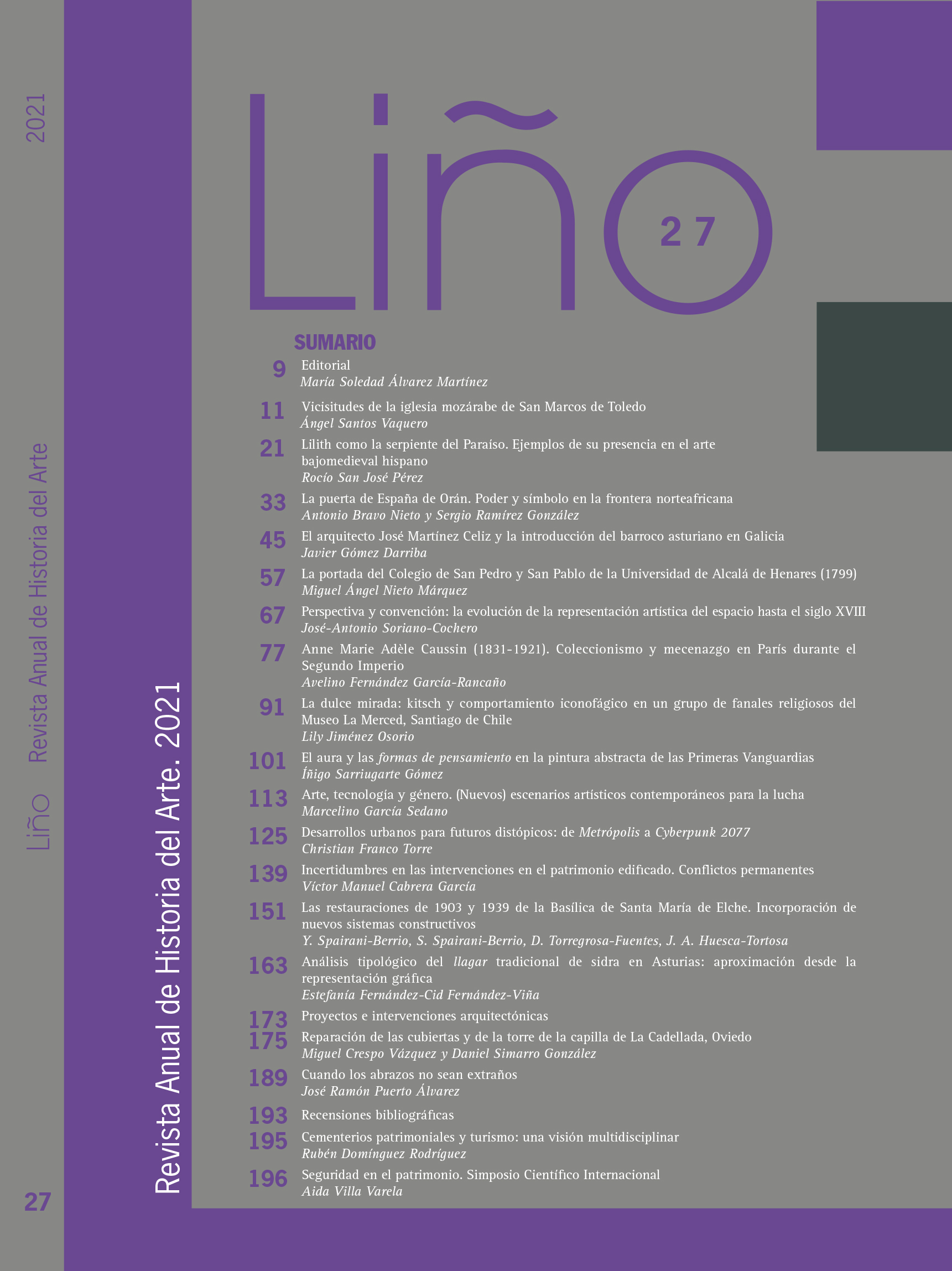Abstract
The Cyberpunk 2077 video game, developed by CD Projekt RED, is set in Night City, a megalopolis that the player can travel with unprecedented freedom besides with a first-person perspective that provides an evocative immersive experience.
But when touring Night City, the player discovers a city that is familiar to him, both in its urban and architectural design and in the origin of its population, since the megalopolis of Cyberpunk 2077 contains an entire iconography of the representation of dystopian cities in different disciplines artistic that can be traced back to Metropolis (Fritz Lang, 1927), and that reflect both the intuitions of their creators about the cities of the future will be like and their disturbing reflections on the urbanity of their time.
References
ALTAMIRANO, Rafael, "Cine y Arquitectura: "Blade Runner", Plataforma Arquitectura. Accedido el 12 Dic 2020. <https://www.plataformaarquitectura.cl/cl/02-351170/cine-y-arquitectura-blade-runner-2>
ARIZA CANALES, Manuel, "Escenarios para íntimos enemigos en el cine de Ridley Scott: Los duelistas (1977) y Blade Runner (1982)", Actas del V Congreso Internacional de Historia y Cine, Universidad Carlos III, Madrid, 2017, pp. 521-556.
DA PAISAO Jr., Márcio Mário, "Os quadrinhos cinematográficos de Moebius", Actas del XXVI Congresso Anual em Ciência da Comunicação, Belo Horizonte, 2 a 6 de septiembre de 2003.
ELSAESSER, Thomas, Metropolis, British Film Institute, Londres, 2000.
GONZÁLEZ, Dionisio, /Construir, Habitar, Existimar/, Museo de Bellas Artes de Asturias, Oviedo, 2018.
KRACAUER, Siegfried, De Caligari a Hitler. Una historia psicológica del cine alemán, Paidós, Barcelona, 2011.
MENSURO, Asier, "Cine y cómic europeos", Nosferatu. Revista de cine nº34, San Sebastián, 2001, pp. 177-183.
NAVARRO REMESAL, Víctor, Libertad dirigida. Una gramática del análisis y diseño de videojuegos, Shangrila Textos Aparte, Santander, 2015.
NAVARRO REMESAL, Víctor (coord.), Pensar el juego. 25 caminos para los game Studies, Shangrila Textos Aparte, Valencia, 2020.
NEWTON, Colin, "Desde el futuro, Blade Runner 2049 nos habla sobre el presente de las ciudades", Plataforma Arquitectura. Accedido el 13 Dic 2020. <https://www.plataformaarquitectura.cl/cl/890012/desde-el-futuro-blade-runner-2049-nos-habla-sobre-el-presente-de-las-ciudades>
MOLINA-Siles, Pedro y BARROS COSTA, Hugo, Blade Runner: Los Ángeles 2019. Los dibujos de una ciudad en decadencia, Expresión Gráfica Arquitectónica nº 36, Universitat Politècnica de València, Valencia, 2019, pp.186-197.
RODRÍGUEZ SERRANO, Aarón, Ghost in the Shell. Nostalgia de la reencarnación, Shangrila Textos Aparte, Santander, 2017.
ROSMANINHO, Joao, "Citypunk: Transgeographies in Science Fiction Comics", en VANDER WALL, Erin (ed.), Edgelands. A Collection of Monstruous Geographies, Inter-Disciplinary Press, Oxfordshire, 2016.
SÁNCHEZ-BIOSCA, Vicente, Sombras de Weimar: contribución a la historia del cine alemán 1918-1933, Verdoux, Madrid, 1990,
SANTOS, Antonio, Tiempos de ninguna edad. Distopía y Cine, Catedra, Barcelona, 2019.

